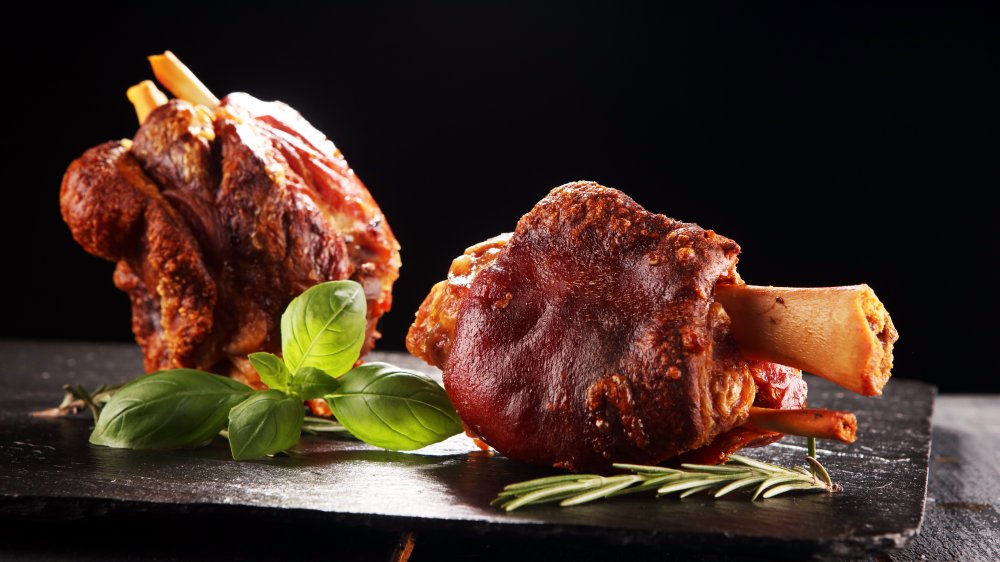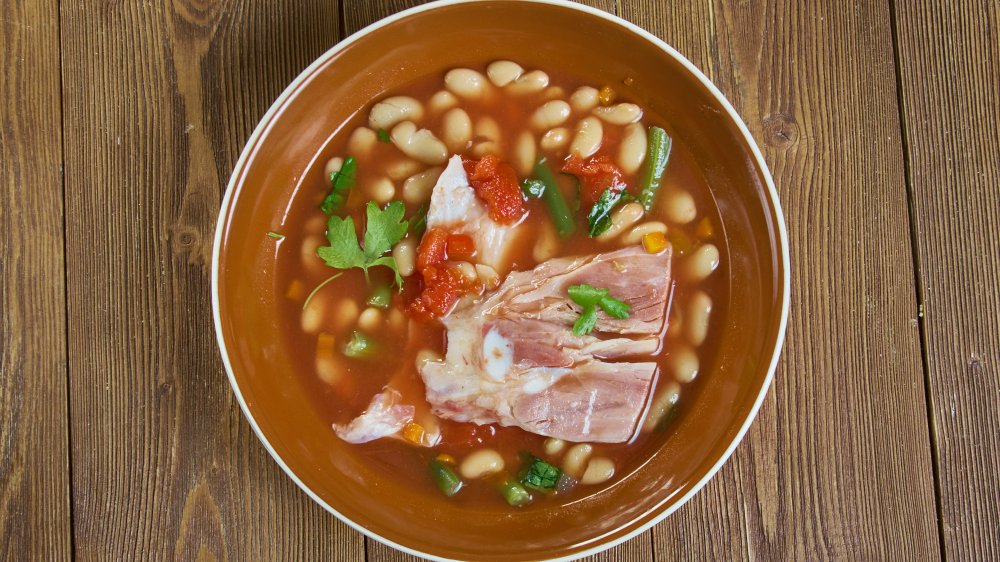The Real Difference Between Ham Hock And Shank
For some of us, hunkering down in the kitchen to prepare a big pot of something warm and comforting is the best form of self-care there is. Huge pots of beans, stews, and slow-cooked greens are sometimes all we need in life. But, those hours of stirring and simmering would be wasted without the addition of something rich and meaty in the mix. That's where ham hocks and shanks come in. These skin-on, bone-in pork cuts have a lot in common and both will offer up plenty of oozy collagen, which Lifehacker says lends body and a smooth, silky mouthfeel to your food. Hocks and shanks are usually sold smoked, in which case Melanie's Kitchen says they can be used interchangeably to infuse a dish with complex, bacon-y flavor. It's important to note though, ham hocks and shanks are not exactly created equal – they come from two different areas of the pig and one is meatier than the other, making it a bit more versatile.
My Recipes explains ham hocks are the joint between the pig's foot and leg which means they're made up of mostly skin, tendons, and ligaments and not very much meat. Conversely, according to Piedmont Grocery, shanks come from just below the pig's shoulder or hip and tend to be meatier than hocks. If you can find pork shanks fresh rather than smoked, they can be prepared on their own just like lamb or beef shanks.
How to cook with ham hocks and shanks
Food & Wine suggests making a meal out of fresh shanks by braising them low and slow in chicken stock, wine, onions, carrots, and celery. But if you're faced with smoked ham shanks or hocks at your grocery store, simply choose one or the other and put them to work as a flavoring agent in a pot of white beans with dried herbs, crushed red pepper, and broth as The Spruce Eats does, or in Bon Appetit's slow-simmered chickpea soup with lots of garlic and kale.
When using a ham hock, Bon Appetit recommends discarding the skin, bones, and fatty remnants left on the hock at the end of cooking but says to save the little bits of meat still connected to the bone, which can be chopped and added back into the pot. Piedmont Grocery says the slightly more substantial meat from long-cooked shanks will fall right off the bone, making for an effortless contribution of a little more substance to your dish. You'll pay more for the meatier shank then you will for the leaner hock but both are still considered inexpensive cuts. Plus, they freeze well so be sure to stock up when you find them and settle in for some slow-cooked deliciousness.

